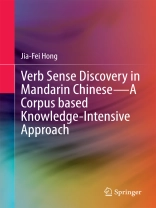This book applies linguistic analysis to the poetry of Emeritus Professor Edwin Thumboo, a Singaporean poet and leading figure in Commonwealth literature. The work explores how the poet combines grammar and metaphor to create meaning, making the reader aware of the linguistic resources developed by Thumboo as the basis for his unique technique.
The author approaches the poems from a functional linguistic perspective, investigating the multiple layers of meaning and metaphor that go into producing these highly textured, grammatically intricate verbal works of art. The approach is based on the Systemic Functional Theory, which aids the study of how the poet uses language (grammar) to craft his text in a playful way that reflects a love of the language. The multilingual and multicultural experiences of the poet are considered to have contributed to his uniquely creative use of language.
This work demonstrates how the Systemic Functional Theory, with its emphasis on exploring the semogenic (meaning-making) power of language, provides the perspective we need to better understand poets’ works as intentional acts of meaning.
Readers will discover how the works of Edwin Thumboo illustrate well a point made by Barthes, who noted that “Bits of code, formulae, rhythmic models, fragments of social languages, etc. pass into the text and are redistributed within it, for there is always language before and around the text.”
With a focus on meaning, this functional analysis of poetry offers an insightful look at the linguistic basis of Edwin Thumboo’s poetic technique. The work will appeal to scholars with an interest in linguistic analysis and poetry from the Commonwealth and new literature, and it can also be used to support courses on literary stylistics or text linguistics.
Table des matières
Introduction.- Previous Researches on Lexical Ambiguity and Polysemy.- Lexical Knowledge Base and Corpus.- Corpus-based and Computational Analysis.- Evaluation in Chinese Wordnet and
Xiandai Hanyu Cidian.- Experimental Evaluation.- Comparison between Corpus-based and Computational with Experimental Determination.- Conclusion.












